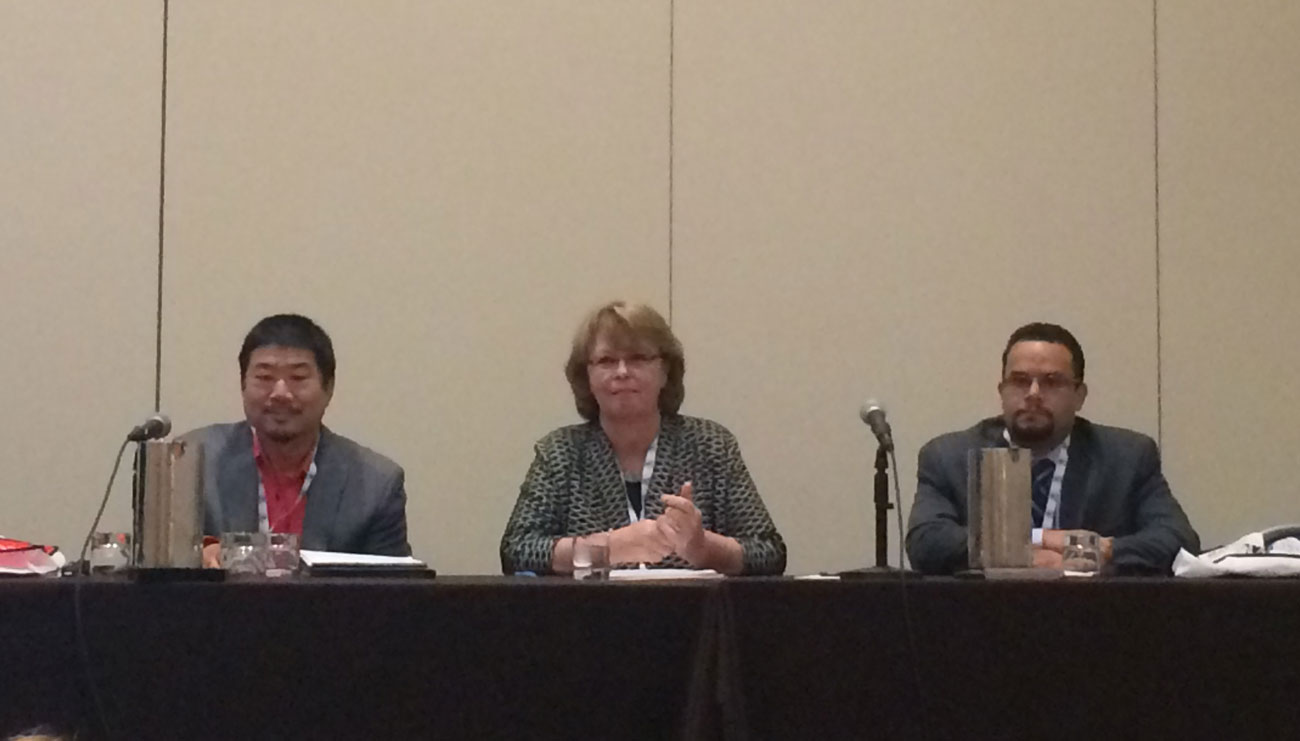BALTIMORE—It may not seem like biotechnology, manufacturing and construction have much in common, but according to panelists at the U.S. News STEM Solutions Conference in Baltimore, all these industries provide opportunities for well-paid jobs without the need for a college degree.
With the right kind of STEM training, individuals from low-income or underserved communities can fill these roles, support their families and build upwardly mobile careers.
Speakers from different job readiness training organizations around the country discussed the obstacles and opportunities in a session on “Proven Pathways and Helping Hands” Thursday.
“Science, technology, engineering and math – these topics and things are critically important for living wage jobs across the spectrum,” said John Kim, the executive director of the Seattle Jobs Initiative, an organization that puts low-income residents on the path to manufacturing jobs and industry-recognized credentials. “You’d be surprised where it shows up.”
Lack of education doesn’t have to be a barrier. Seattle Jobs Initiative has transitional classes to bring enrollees up to the program’s eighth-grade math and reading threshold.
The BioTechnical Institute of Maryland has similar programs to ready trainees for jobs as lab technicians in the biotechnology field. Executive Director Kathleen Weiss said high turnover due to students just passing through for job experience on the way to medical school slows the pace of scientific research. Underemployed individuals from outside the industry are well suited for these jobs and then have opportunities to work in a variety of settings from food science to biohazard.
But it’s not enough to give technical training. Many target participants are unfamiliar with the culture of the professional work environment. At the Jane Addams Resource Corporation, which prepares participants for jobs in the advanced manufacturing sector, students learn in a simulated work environment where they clock in and clock out, for example, so they develop essential soft skills along with the technical ones.
Most trainees also face a number of other barriers like deep poverty, criminal backgrounds, trauma, homelessness and mental health issues. All the programs try to provide some level of support services whether its transportation or counseling or connection to outside experts.
Regardless of obstacles, believing their trainees can overcome them is key to program success, the speakers said.
“We talk about barriers because those are the challenges that we’re trying to face, but you know what, that person sitting in front of me is not a collection of barriers,” Kim said. “That is a person who is wanting to become self-sufficient and take care of their family.”
All the speakers agreed that there are more than enough jobs to be had. There is already a high vacancy rate for middle skill jobs in manufacturing, and as the boomer generation retires out of the field in what Kim called “the gray tsunami,” these positions will only get harder to fill. 650,000 of these manufacturing jobs go unfilled every year, according toManny Rodriguez, the senior director of Replication and Strategic Partnerships at the Jane Addams Resource Corporation.
Likewise, in the booming biotechnology industry, technological advancement will drive exponential job growth in the field, Weiss explained.
“The maturation of the technological innovation and the rate at which that innovation is occurring will generate an increasing number and waves of jobs and we’re not ready,” she noted.
People shouldn’t shy from these alternative paths, the panelists said. Student debt can be a huge disservice for some, and there are abundant opportunities to make a good living and contribution with the help of diverse array of programs and skills-training services.
“You’ve go to understand that there is opportunity here,” Rodriguez said. “It doesn’t always have to be the traditional pathway.”


